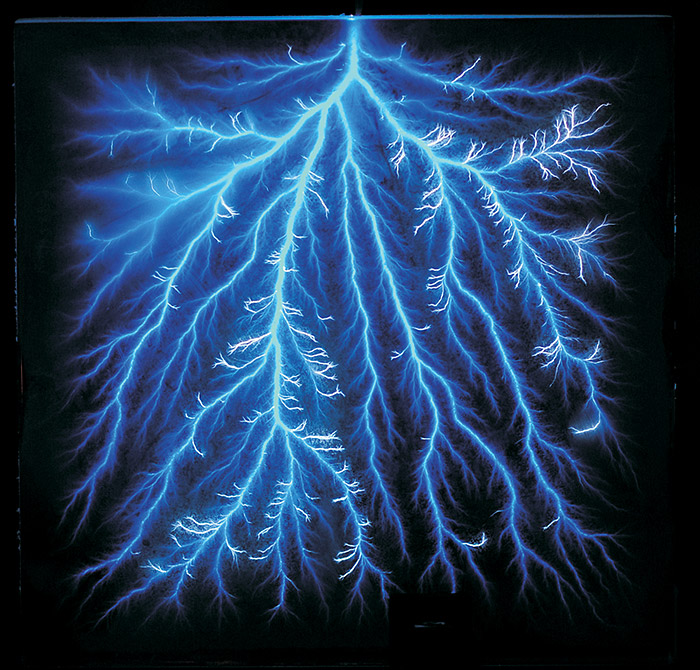Accelerator art
DOI: 10.1063/1.3580504
More than two centuries ago, Germany’s first professor of experimental physics, Georg Christoph Lichtenberg, recorded the branching of electrical discharges in insulators. Today such Lichtenberg figures, reminiscent of lightning, still capture people’s curiosity, both as commercial “scientific art” and as objects for experimental study.
This photograph captures an electrical discharge in a 15 × 15 × 2.5 cm acrylic block. Timothy Koeth and colleagues at the University of Maryland, College Park cooled the block with dry ice, then irradiated it with 5-MeV electrons. The charge buildup inside the acrylic, about 200 µC, generated a strong electric field but not quite enough to cause dielectric breakdown. Then, with a sharp tap to the top of the block, the team triggered a discharge that lasted just 100 ns as it propagated through the block with unexpected speed—roughly 1% of the speed of light and orders of magnitude faster than the speed of sound—generating a peak current of hundreds of amps and leaving behind blue fractures in the acrylic; secondary discharges generated the white traces. In a further surprise, after the discharge the still-flickering block exhibited unique electrical characteristics, including ringing at 50 MHz like an LC circuit. (Image submitted by Timothy Koeth.)
To submit candidate images for Back Scatter, visit http://www.physicstoday.org/backscatter.html






